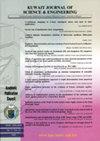Quantum behaved Intelligent Variant of Gravitational Search Algorithm with Deep Neural Networks for Human Activity Recognition
引用次数: 0
Abstract
Human activity recognition (HAR) encompasses the detection of daily routine activities to advance usability in detecting crime and preventing dangerous activities. The recognition of activities from videos and image sequences with higher exactitude is a major challenge due to system complexities. The efficient feature optimization approach can reduce system complexities by removing ineffective features, which also improves the activity recognition performance. This research work presents a novel quantum behaved intelligent gravitational search algorithm to optimize the features for human activity recognition. The proposed intelligent variant is termed as INQGSA, which optimizes the features by using the advantageous attributes of quantum computing (QC) and intelligent gravitational search algorithm (INGSA). In INQGSA, the intelligent factor avoids the trapping of mass agents in later iterations by using the information of the best and worst agents to update the position of agents. The addition of quantum computing based attributes (such as quantum bits, their superposition, and quantum gates, etc.) ensures a better diversity of discrete optimized features. To analyze the superiority of INQGSA, the feature optimization is also conducted with the gravitational search algorithm (GSA) and the quantum-inspired binary gravitational search algorithm (QBGSA). Finally, the optimized selected features are utilized by the deep neural networks (DNN) of ResNet-50V2 and ResNet-101V2 for the classification of activities. The activity recognition experiments are conducted on the UCF101 and HMDB51 datasets. The performance comparison of the proposed HAR system with state-of-the-art techniques signifies that the proposed system is superior and effective in detecting the different activities.基于深度神经网络的量子行为引力搜索算法的智能变体人体活动识别
人类活动识别(HAR)包括对日常活动的检测,以提高检测犯罪和预防危险活动的可用性。由于系统的复杂性,从视频和图像序列中以更高的精度识别活动是一个主要挑战。有效的特征优化方法可以通过去除无效特征来降低系统的复杂性,从而提高活动识别的性能。本研究提出了一种新的量子智能引力搜索算法,以优化人体活动识别的特征。提出的智能变体被称为INQGSA,它利用量子计算(QC)和智能引力搜索算法(INGSA)的优势属性对特征进行优化。在INQGSA中,智能因子利用最佳和最差代理的信息更新代理的位置,避免了在后续迭代中大量代理的陷阱。添加基于量子计算的属性(如量子比特,它们的叠加和量子门等)确保了离散优化特征的更好多样性。为了分析INQGSA的优势,还使用引力搜索算法(GSA)和量子启发二元引力搜索算法(QBGSA)进行了特征优化。最后,利用ResNet-50V2和ResNet-101V2的深度神经网络(DNN)对活动进行分类。在UCF101和HMDB51数据集上进行了活动识别实验。将提议的HAR系统与最先进的技术进行性能比较,表明提议的系统在探测不同的活动方面是优越和有效的。
本文章由计算机程序翻译,如有差异,请以英文原文为准。
求助全文
约1分钟内获得全文
求助全文
来源期刊

Kuwait Journal of Science & Engineering
MULTIDISCIPLINARY SCIENCES-
自引率
0.00%
发文量
0
审稿时长
3 months
 求助内容:
求助内容: 应助结果提醒方式:
应助结果提醒方式:


